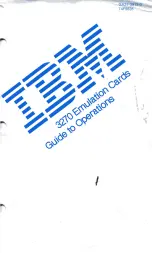
o
The RAD indicators on the rear panel correspond with the indicators on the individual RADs, pro-
viding information on the health of the wiring. If a RAD is functioning properly and the HAL is
communicating properly with the RAD, all four indicators on the rear panel of the HAL/EXP
should be green for each connected RAD.
o
The RAD indicators on the front panel provide information about the actual connection and any
activity between each RAD and the HAL/EXP. For each port to which a RAD is connected, the
Enabled indicators for each active RAD channel should be yellow. (If the Enabled LEDs are flash-
ing yellow, they indicate the RAD model specified in the HAL configuration does not match the
physical RAD model detected on the port.) If audio is flowing through the system, you may see
activity on the Signal and/or Overload indicators.
DRs:
o
The DR indicators on the front panel provide information about the actual connection between
each DR and the HAL/EXP. If everything is A-OK, the DR LED should be solid yellow. If the
LED is flashing yellow, this indicates a mismatch between the physical DR and the configured DR
for this port.
o
The DR indicators on the rear panel provide information about the health of the wiring, indicating
if the data communications and power are functioning properly. If solid green, all is well. If one or
both LEDs turn red, this typically indicates a problem with that specific twisted pair.
5. When you are confident that a device is working properly, you can attach it to the switchbox:
l
If installing a RAD, insert its label before attaching it to the switchbox (if it was not already
labeled off-site). The RADs are shipped with factory labels inserted. You can use these, but in most
cases you will probably want to customize the label. If your audio designer did not provide you
with customized labels, you will need to generate them. See "Generating RAD Labels" on page 34
for details. Insert the paper label in the slot behind the Lexan window and trim the excess paper. If
you do not need to use the label slot (for example, you may be labeling the RAD some other way),
you can flip over the factory-provided label and insert it.
l
If a RAD contains an XLR tab and you do not need it, you should remove it before attaching the
RAD to the wall. You can do so by inserting something with a small tip in the back of the RAD
where the XLR tab is connected. Push down on the metal connection and pull the XLR tab away
from the RAD. The connectors in the RADs are manufactured by Neutrik. We have found that the
pins provided by Neutrik for removal of the XLR tab work much better for this task than paper
clips, straight pins, or anything else you might find lying around the office. If you do not have a
Neutrik pin available, contact Rane Corporation and we will gladly send one to you.
l
Use the captivated screws on the RAD or DR to attach it to the switchbox. Note that the screws
are in slots so that you can adjust the device if need be (for example, to level it inside a switchbox
that isn’t level). Also, take note of the four metal circles at the top and bottom of each device—the
ones that look like Mickey Mouse ears! You can bend or snap these off and use them for various
purposes. For example, if the switchbox is not flush with the wall, you can slightly bend one or
more of these circles to make the RAD or DR flush with the wall. Also, using a pair of needle-nose
pliers, you can easily snap them off, and use them as washers behind the screws.
HAL SYSTEM INSTALL GUIDE
81
Summary of Contents for HAL1x
Page 1: ...HAL System Installation Guide Halogen Software Version 6 2 ...
Page 11: ...CHAPTER 1 Getting Started 5 ...
Page 37: ...CHAPTER 2 Hardware Component Details 31 ...
Page 46: ...System Preferences Sound Input OS X Playback and Recording HAL SYSTEM INSTALL GUIDE 40 ...
Page 67: ...Remote Power Injector RPI CHAPTER 2 Hardware Component Details 61 ...















































